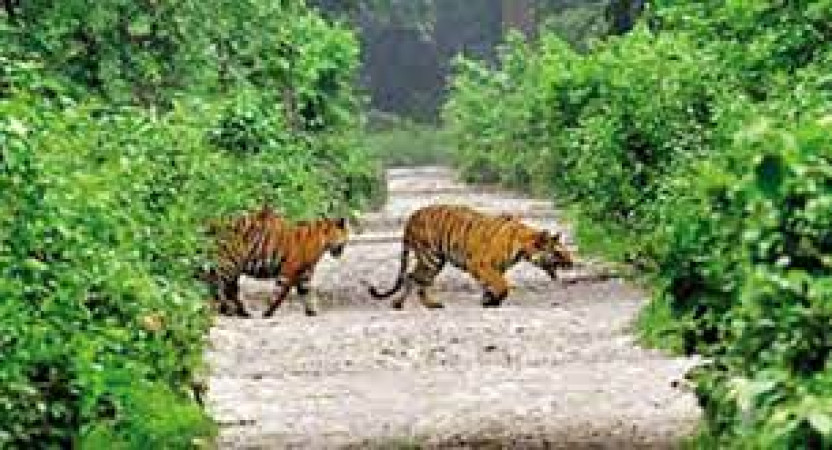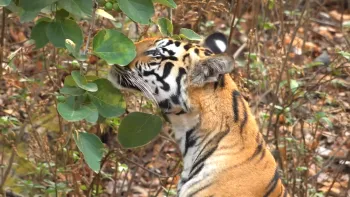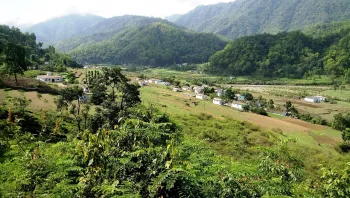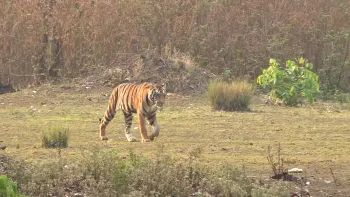Manas National Park Travel Guide
Manas National Park, located in the state of Assam in India, is a UNESCO World Heritage Site known for its rich biodiversity and stunning landscapes. The park is home to a variety of wildlife, including the endangered Bengal tigers, one-horned rhinoceros, and pygmy hogs. With its diverse flora and fauna, lush forests, and meandering rivers, Manas National Park offers visitors a unique opportunity to experience the beauty of nature up close.Top Attractions in Manas National Park
- Jeep Safari through the lush forests
- Elephant Safari to spot wildlife
- Bird watching along the Manas River
- Exploring the ancient ruins of the Manas Maozigendri Ecotourism Society
Manas National Park is Famous for
Its diverse wildlife and stunning natural beauty.Top Attractions in Manas National Park
- Spotting Bengal tigers in their natural habitat
- Exploring the Manas Maozigendri Ecotourism Society
- Bird watching along the Manas River
- Witnessing the annual Elephant Festival
What's Great about Travelling to Manas National Park?
- Perfect for nature enthusiasts
- Great for wildlife photography
- Offers unique wildlife experiences
What's Not So Great about Travelling to Manas National Park?
- Not suitable for luxury travelers
- Limited accommodation options
- Can be challenging for elderly visitors
Travel Tips for Manas National Park
- Obtain the necessary permits for entry
- Follow the park rules and regulations
- Wear comfortable clothing and sturdy shoes
Important Manas National Park trip information
- Ideal Duration: 2-3 days
- Best Time to Visit: November to April
- Nearby Airports and Railway Stations: Guwahati Airport and Barpeta Road Railway Station
Per Person
2,82,000
*EXCLUDING APPLICABLE TAXES 5.0 Ratings
( 445 Reviews )
( 445 Reviews )
Per Person
3,499
*EXCLUDING APPLICABLE TAXES 4.5 Ratings
( 31 Reviews )
( 31 Reviews )
Per Person
24,800
*EXCLUDING APPLICABLE TAXES 4.8 Ratings
( 37 Reviews )
( 37 Reviews )
Per Person
18,500
*EXCLUDING APPLICABLE TAXES 5.0 Ratings
( 445 Reviews )
( 445 Reviews )
Per Person
15,000
*EXCLUDING APPLICABLE TAXES Per Person
14,500
*EXCLUDING APPLICABLE TAXES 5.0 Ratings
( 445 Reviews )
( 445 Reviews )
FAQ's on Manas National Park
Q1: What is the best time to visit Manas National Park?
The best time to visit Manas National Park is from November to April when the weather is pleasant, and the park is open for visitors. This period offers the opportunity to witness the diverse wildlife and lush greenery. However, the park is closed during the monsoon season from May to October due to heavy rainfall and flooding. To avoid the heat and maximize wildlife sightings, the months of February to April are ideal.
Q2: Do I need a visa to travel to Manas National Park?
Foreign tourists visiting Manas National Park will need a valid Indian visa to enter the country. It is advisable to check with the nearest Indian embassy or consulate for specific visa requirements based on your nationality. Additionally, travelers should ensure their visas are valid for the duration of their stay in India and any excursions to national parks.
Q3: What are the must-visit attractions in Manas National Park?
Manas National Park is renowned for its rich biodiversity and stunning landscapes. Must-visit attractions include the iconic Manas River, the endangered Bengal Florican, and the vibrant birdlife at the Bansbari range. Exploring the dense forests, grasslands, and wetlands offers opportunities to spot tigers, elephants, rhinoceros, and various bird species. The UNESCO World Heritage Site status of the park adds to its allure.
Q4: Is Manas National Park a safe place to travel?
Manas National Park is generally safe for tourists, but it is essential to follow safety guidelines provided by park authorities. Avoid straying from designated paths, especially during safari tours, and respect the wildlife from a safe distance. It is advisable to be cautious of leeches, snakes, and other wildlife while exploring the park. Travelers should also be aware of any seasonal risks, such as flooding during the monsoon season.
Q5: What is the local currency in Manas National Park and can I use credit cards?
The local currency in India is the Indian Rupee (INR). While credit cards are accepted at some hotels, restaurants, and larger establishments near Manas National Park, it is advisable to carry sufficient cash for transactions in smaller shops or for entry fees to the park. ATMs may not be readily available in remote areas, so it is recommended to withdraw cash in advance.
Q6: What is the local cuisine like in Manas National Park?
The local cuisine around Manas National Park offers a blend of flavors from Assamese, Bodo, and other indigenous communities. Traditional dishes include rice, fish, meat, and a variety of herbs and spices. Must-try dishes include Assamese thali, bamboo shoot curry, fish tenga, and pithas (rice cakes). Vegetarian options are also available, with influences from the region's agricultural practices. Travelers with dietary restrictions can find options suited to their needs in local eateries and accommodations.
Q7: What transportation options are available in Manas National Park?
Transportation options in and around Manas National Park include buses, taxis, and private vehicles. Visitors can hire jeeps for safari tours within the park or opt for guided tours with transportation included. Public buses and shared taxis are available for travel to nearby towns and attractions. It is advisable to arrange transportation in advance for convenience, especially during peak tourist seasons. Roads leading to the park may vary in condition, so travelers should plan their routes accordingly.
Q8: Are there any cultural norms or etiquette I should be aware of when visiting Manas National Park?
When visiting Manas National Park, it is important to respect the local customs and traditions of the indigenous communities in the region. Dress modestly, especially when visiting religious sites or interacting with locals. Seek permission before taking photographs of individuals or cultural events. It is customary to remove shoes before entering certain places, such as temples or homes. Additionally, being mindful of wildlife and the environment is crucial to preserving the natural beauty of the park. Engaging with local guides and residents can offer valuable insights into the cultural heritage of the area.
Q9: I am a travel agent. How can I buy travel leads of Manas National Park?
Register yourself as a travel agent at agents.tripclap.com and then you can buy travel leads to Manas National Park once your account is approved. For more details contact our support team at +91-8069186564 or support@tripclap.com



![Meghalaya with kaziranga 6N/7D tour package LD- 517577 [Based on 2 Adults]](https://static.tripclap.com/uploads/package/350X200/1763018166-1763018166-1051e.webp)



